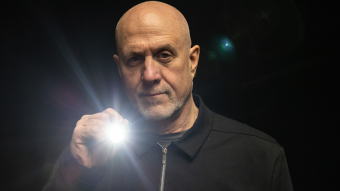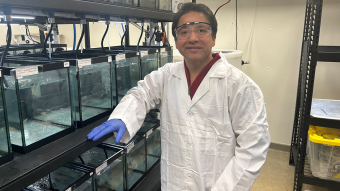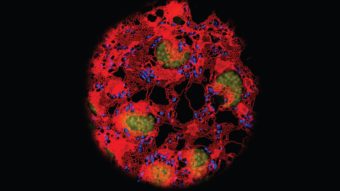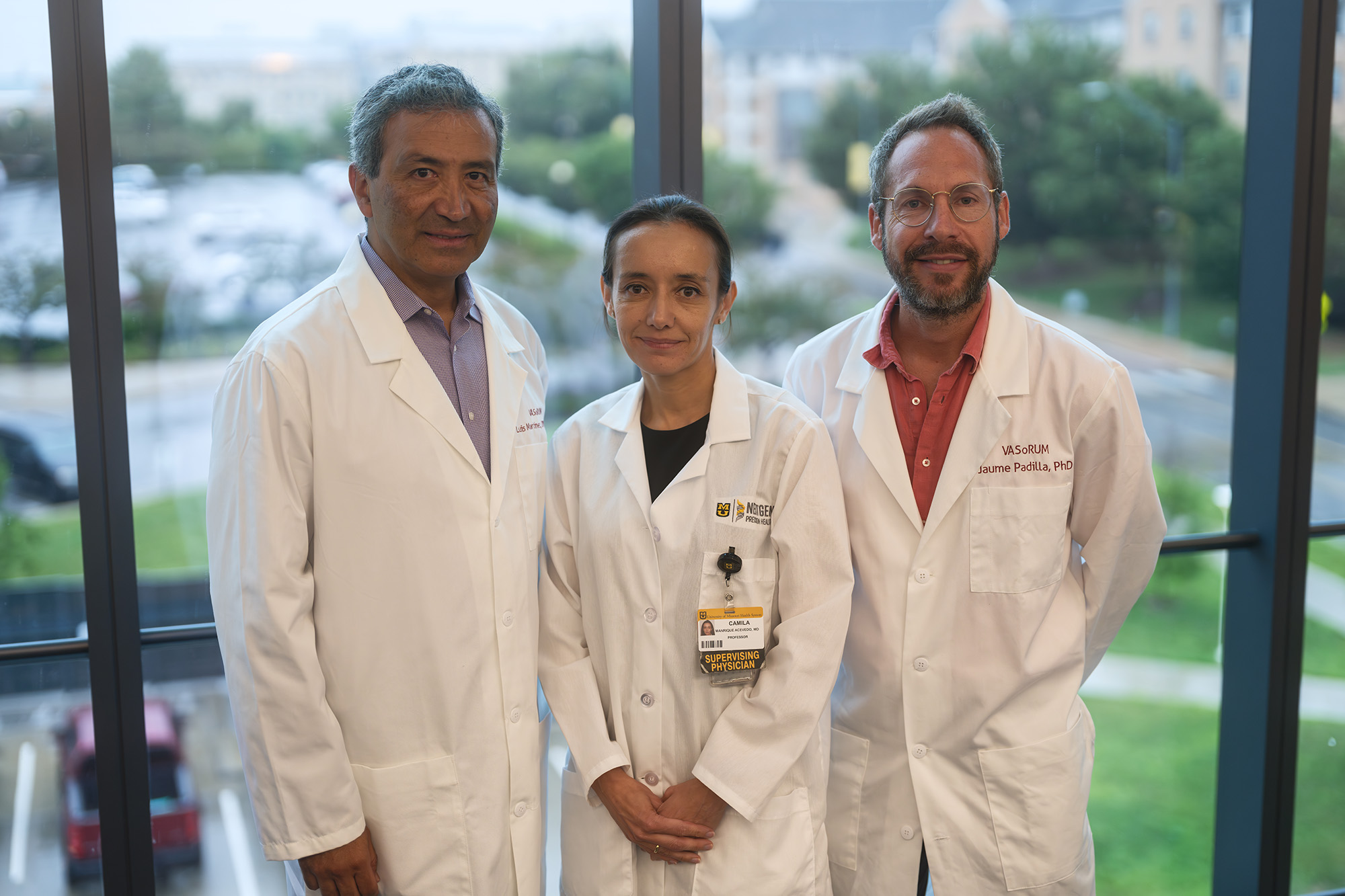
Sept. 11, 2024
Contact: Courtney Perrett, 573-882-6217, cperrett@missouri.edu
Photo by Ben Stewart
COLUMBIA, Mo. — The human vascular system delivers oxygen, nutrients, hormones and other vital substances to cells and organs in the body. When that system loses the ability to expand and contract — a process called arterial stiffening — the body is more susceptible to cardiovascular disease. In a remarkable discovery, a team of researchers at the University of Missouri have helped pioneer a molecular therapeutic that reduces arterial stiffness and improves blood vessel function, providing hope for those suffering from cardiovascular disease.
Now, this team of scientists is determined to unveil new treatments for arterial stiffness — a key driver of cardiovascular disease (CVD) — while continually seeking ways to prevent it in the first place. To achieve this, they will investigate the inner workings of vascular dysfunction, particularly as it relates to older adults who suffer from this phenomenon more acutely.
This research is made possible by a $3 million grant over five years from the National Institutes of Health and sets up Camila Manrique-Acevedo, Luis Martinez-Lemus and Jaume Padilla to tackle the leading cause of mortality in America today.
“One of the strengths of our research program is our ability to test mechanistic and translational research questions using a plethora of approaches, including cell culture models, studies in isolated arteries and human clinical trials,” said Padilla, a professor of nutrition and exercise physiology in Mizzou’s College of Agriculture, Food and Natural Resources and the MU School of Medicine. “The process of translating findings from animal models to humans is made seamless in part because of the resources available at the NextGen Precision Health building.”
Tackling heart disease head-on
This team had one of the first established interdisciplinary labs in the NextGen Precision Health building, allowing the researchers to see much success in their advances for arterial stiffening treatments.
“Our research group studies the mechanisms of cardiovascular disease,” said Martinez-Lemus, a professor of medical pharmacology and physiology in the MU School of Medicine. “We know that conditions such as diabetes, hypertension and obesity, as well as factors such as age, cause the vasculature to stiffen, and there have been no treatments to address that up to this point.”
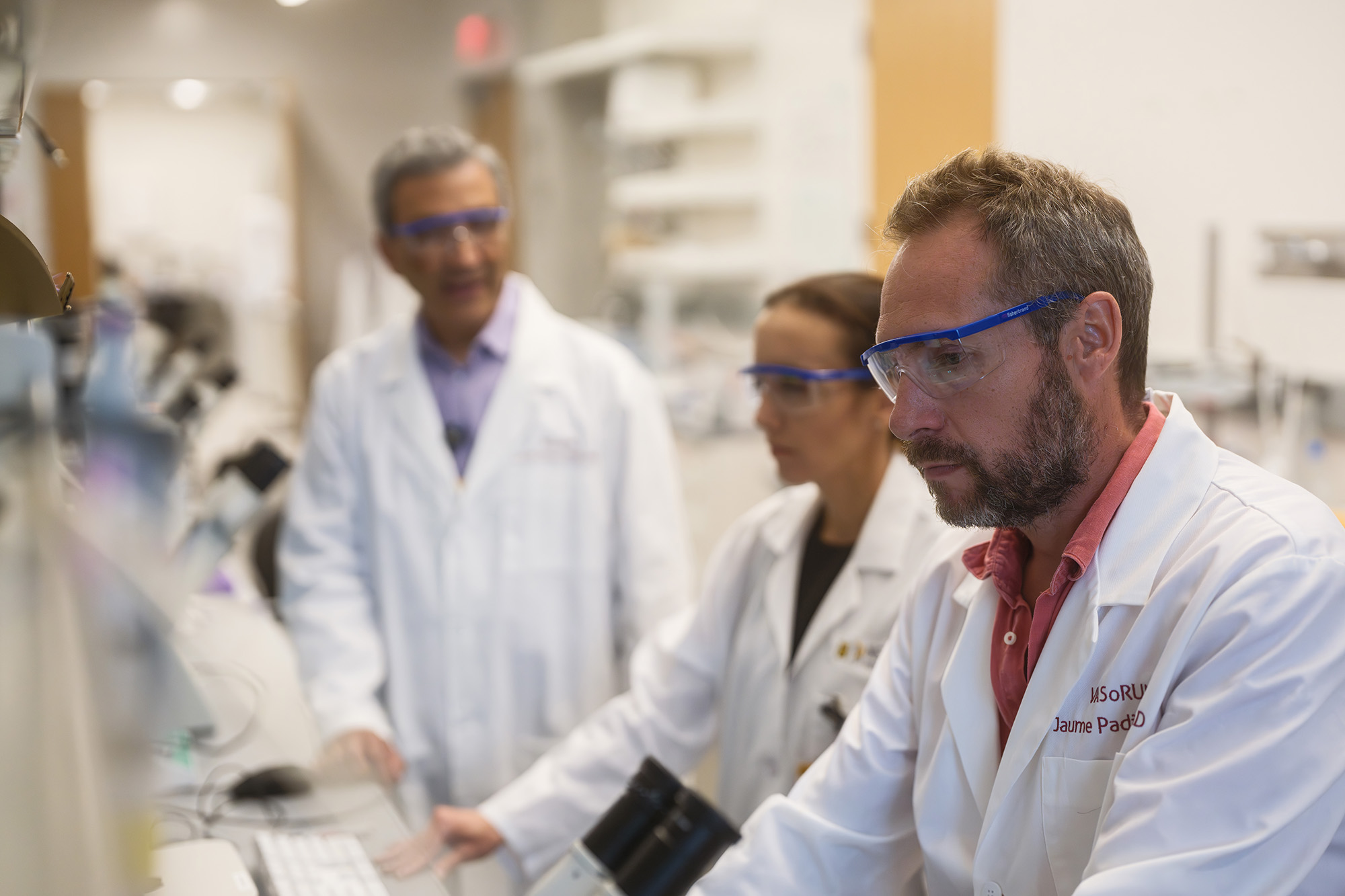
Because arterial stiffening is associated with fatal conditions such as heart failure, chronic kidney disease and stroke, it’s important that researchers focus on understanding not only how and why it occurs, but also how to treat it.
Thanks to the grant, the team will spend the next five years researching the mechanisms that drive arterial stiffening in individuals 60 years and older, as well as determining the efficacy of therapeutics such as the sodium glucose co-transporter 2 (SGLT2) inhibitor empagliflozin (Empa) that proved successful in reducing stiffness and improving vascular function in other populations.
In their new iteration of the study, the team tests whether this inhibitor de-stiffens vascular smooth muscle cells thereby reducing arterial stiffening. They found that SGLT2 inhibition could be a potential treatment to reduce the progression of cardiovascular disease in older adults.
While Padilla notes that there is still no pharmacological treatment for vascular aging, people can look after the health of their vascular systems by prioritizing a few key lifestyle changes.
“Because arterial stiffening can start as early as adolescence, it’s vital that people commit to a healthy lifestyle, which will minimize their risk for cardiovascular disease,” Padilla said. “That means exercising regularly, reducing sedentary time and maintaining a healthy body weight.”
Floor-to-floor collaboration
The development of effective treatments for complicated diseases is a years-long process: It begins with an idea and evolves to basic science experiments and then proceeds to animal and, eventually, human clinical trials.
But, because of the facilities at the NextGen Precision Health building, this team can work on each of these components simultaneously, which saves time, expands avenues for inquiry along the way and encourages collaboration with researchers from other specialties.
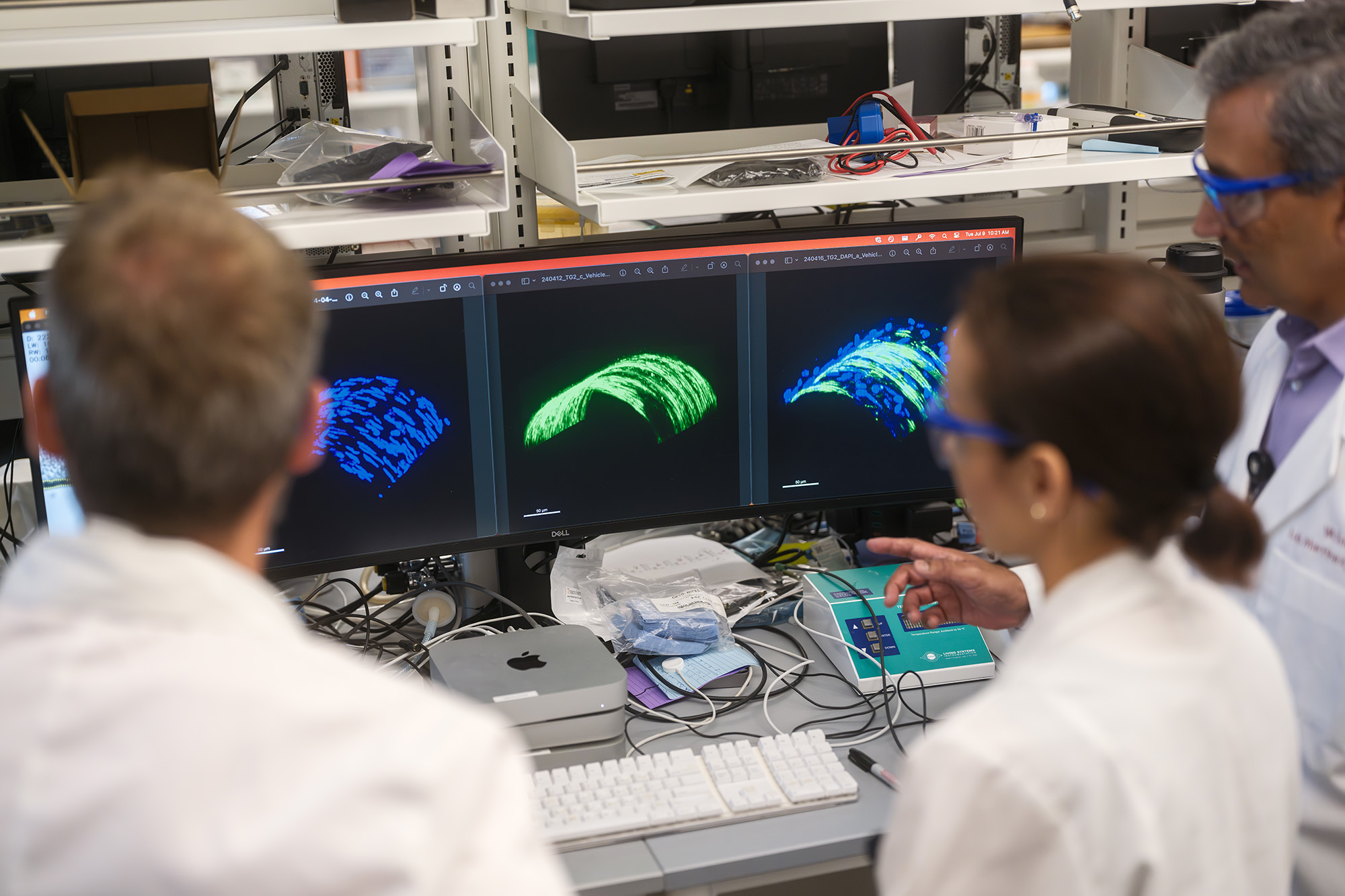
"When the NextGen building opened, it was our opportunity to come together under one roof and do basic science alongside human studies,” Padilla said. “We have the Clinical and Translational Science Unit and our wet lab on the third floor. This positions us well for forward and reverse translational studies.”
Manrique-Acevedo, a professor of endocrinology and clinician in Mizzou’s School of Medicine, echoed Padilla’s sentiment, adding that NextGen’s setup also presents the possibility of collaborating with fellow scientists.
“Fighting cardiovascular disease is a common theme throughout the building,” Manrique-Acevedo said. “For instance, nowadays when people survive cancer, they have an increased risk of cardiovascular disease. Women who experience reproductive complications have an increased risk of cardiovascular disease. That means our research closely impacts the work of our colleagues on the second and fourth floors, which house the cancer, reproductive and neuroscience teams.”
For Martinez-Lemus, the team’s research is pivotal in illustrating that fatal diseases such as CVD don’t appear overnight.
“I think sometimes we are impressed by the devastation of health news like a cancer diagnosis,” Martinez-Lemus said, “But in the case of cardiovascular disease, the factors that lead to it often occur incrementally, starting with elevated blood pressure levels and gradual arterial stiffening.”
